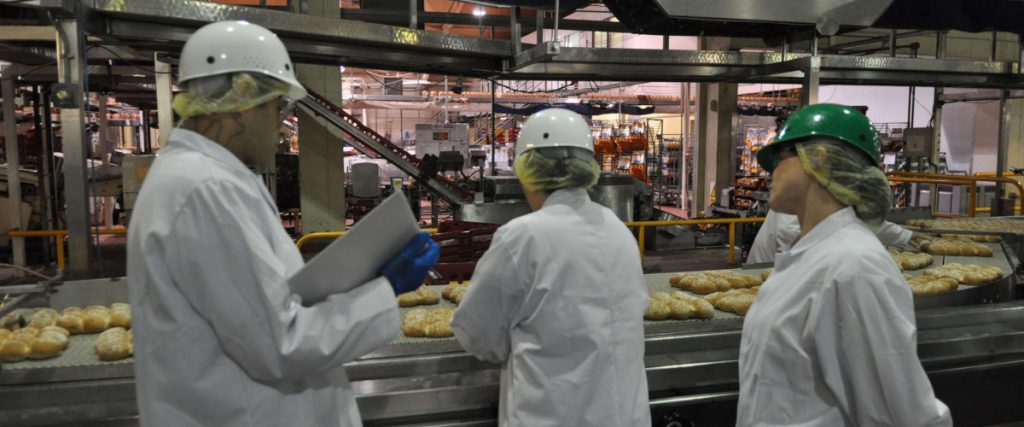Meaning And Objectives Of SQF Internal Auditor Training

SQF, which stands for “Safe Quality Foods,” was a standard developed in Australia in 1994. It has been owned and managed by the Food Marketing Institute since 2003. It’s one of the great benchmarked certification programs, which are well recognized and followed worldwide, and are highly required by many retailers and food manufacturers in order for them to purchase your company’s products.
SQF began as a food safety standard and has now become a suite of standards for the food industry that has food safety from the agricultural level to all types of food processing and even retail. They are also standards for food quality, the manufacture of the food packaging, storage and distribution of food, and others. The organization that does manage this food standard is the Safe Quality Foods Institute (SQFI).
The SQF standards have a unique structure that includes a modular approach, allowing greater flexibility for certification of the various different parts of the food industry with a consistent approach at all levels. Additionally, its suite of programs now includes SQF fundamentals, which contains two levels of more basic food safety audits, allowing smaller companies a step to step approach to full SQF certification.
In the recent years many people have engaged in SQF internal auditor training, whereby the course teaches them the fundamentals of quality auditing principles, the establishment of food safety and quality criteria, and how to develop and implement an effective internal audit program.
What are the Benefits of SQF Certification?
For buyers, including food manufacturers or retailers, SQF certification programs do reduce the risk of a supply chain issue that could result in a recall and many other financial impacts. Purchasing from certified sites helps companies ensure that their suppliers have rigorous food safety and quality programs in place, thereby reducing risk. Additionally, certified sites are required to have programs in place to ensure that customer requirements are met.
SQF internal auditor training Course objectives.
Introduction to Auditing
Auditing is a systematic and an independent examination of data, statements, records, operations and performances (financial or otherwise) of an enterprise for a stated purpose. In any auditing situation, the Auditor perceives and recognizes the propositions before him for examination, collects evidence, evaluates the same and on this basis, formulates his judgment which is communicated through his audit report.
Internal Audit Program Requirements for GFSI benchmarked schemes, such as SQF.
The Global Food Safety Initiative (GFSI) is an organization whose purpose is to enforce food safety through internationally-recognized benchmarked standards. Becoming GFSI certified helps food manufacturers and processors stay competitive, produce safer products, and improve performance in a number of key areas. If your company is considering certification in one of the GFSI schemes, this guide will help you determine which option is best for your needs.
Audit Best Practices and techniques
An audit helps you assess and improve internal business controls at your company by reviewing risk-management plans and business processes for weaknesses and failures. Audit procedures typically start by assessing current processes and procedures. Auditors then analyze and compare results against internal control objectives to determine whether audit results comply with internal policies and procedures as well as federal and state rules and regulations. As a final step, auditors compile an audit report to present to the business owner.
Audit Result Interpretation and Corrective Action Management
The internal audit results are used to make managerial changes and improvements to internal controls. The purpose of an internal audit is to ensure compliance with laws and regulations and to help maintain accurate and timely financial reporting and data collection.
Corrective action is an efficient aspect of quality management that aims to rectify a task, process, product, or even a person’s behavior when any of these factors produce errors or have deviated from an intended plan. Corrective actions can also be thought of as improvements to an organization to eliminate undesirable effects.
Continual Process Improvement
What is meant by continual process improvement? Continuous process improvement is defined as, “The ongoing improvement of products, services or processes through incremental and breakthrough improvements.” It doesn’t only mean that a business should make changes along the way when things aren’t working smoothly.
SQF Implementation
Once your food safety management system is implemented, it is audited and certified by a third-party certification body. The Food Safety Certification requirements provide a rigorous system to manage food safety risks and provide safe products for use by companies in the food industry.
SQF Implementation varies for each and every company, but it typically includes some common steps:
- Identify an SQF Practitioner, and ensure they all have the proper SQF internal auditor training. A certified 2-day HACCP course is required, as well as auditor training. SQF training is highly recommended prior to certification. Courses such as our HACCP 102 and HACCP 103 are recommended to be taken when timing allows.
- Ensure thorough and proper training is conducted for team members. This includes relevant job-specific training related to SQF programs. Some members of management are also required to have specific training, such as crisis management training and training in the principles of HACCP.
- Establish effective HACCP and Prerequisite Programs.
- We strongly recommend one obtaining a HACCP audit or an audit to the SQF Fundamentals Intermediate standard to confirm program implementation and identify any gaps. Get in contact with a Certification Body, or CB, to coordinate this audit. The CB can also assist in identifying which SQF standards apply to your operation and to start the paperwork for scheduling an audit later, once your company is ready.
- Ensure you get a copy of the SQF self-audit tool from www.sqfi.com, and ensure you conduct a gap assessment to identify what needs to be done. Other helpful resources can be found on the site as well!
- The gaps identified during the gap assessment become your ‘to-do’ list. These are assigned to team members for completion. The team should meet regularly to track progress.
- Finally, we highly recommend getting an SQF pre-assessment audit prior to the official audit. This is an unofficial ‘practice’ audit. This is the best way to identify any final gaps in the program and help ensure a successful certification audit.



